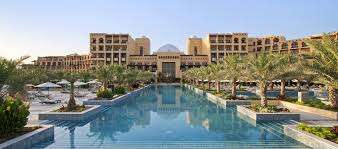Contact
- National Museum of Ras al Khaimah, Al Hisn Road, Al Dhait North, Ras Al Khaimah, Ras al-Khaimah, 2574, United Arab Emirates
- 07 233 3411
- rakheritage@musuem.rak.ae
- rakheritage.rak.ae/en/pages/rakmuseum.aspx
History of Ras al Khaima
The History
It is well known from historical sources an ‘Early Fort’ existed inside Ras Al Khaimah Old Town in close proximity to the Mohammed bin Salim Mosque. The ancient documents and letters inform us that it was at least destroyed twice, in 1621 by the Portuguese and in 1820 by the British. Serving as a residence for the ruling family it was eventually given up around 1920 for a bigger one, just 700m to the south. This ‘Later Fort’ had originally been built between the British attacks of 1809 and 1819 outside the town-wall and Ras Al Khaimah Old Town. Drawn on the ancient British maps as a squarish defense structure strengthened with three round towers and a single big tower, it was eventually developed into a larger fortified complex. It served as the residence of the ruling Quwasim family until 1964, when the late Ruler, H.H. Sheikh Saqr Bin Mohammed al-Qasimi, moved to a modern building in Mamoura. Later it became a police head quarters and a prison, before it was finally converted into the National Museum in 1987. Reflecting an eventful history it has been continuously enlarged over time, displaying a rich diversity of traditional architecture. Today the ‘Late Fort ‘ exhibits historical, ethnographical and archaeological material relating to the emirate of Ras Al Khaimah and provides an interesting insight into the history and traditions of this area.
The Building
Like all other traditional houses in Ras Al Khaimah Old Town the ‘Late Fort’ was originally constructed from coral stone, a fossil building material originating from the sea. Although being fairly light-weight it possesses excellent insulation qualities, keeping buildings cool in summer and warm in winter. Today the massive rectangular tower represents the oldest part of the ‘Late Fort’. It originally served as a single defense tower and, unlike today, stood outside the perimeter wall of Old Town Ras Al Khaimah. While its foundations and lower parts originate from 1809-1819, all further additions took place after the peace treaty was signed with the British in 1820. The picture we get today of the ‘Late Fort’ is that of an interesting conglomerate of two-storey buildings surrounding a central courtyard. The big rectangular tower is still the most impressive feature and a smaller tower occupies the opposite corner. Another prominent building is the wind tower, representing the traditional ‘air conditioning of the past. Its open sides are designed to catch the breeze from any direction and funnel it down into the room below keeping it cool and ventilated, especially during hot summer months. If desired the wind tower could be blocked with matting or specially cut pieces of wood during winter, when the weather was much cooler with occasional rainfall. During recent restoration works different traditional mortars and application methods were used to match the authentic building methods of the past, while simultaneously indicating the architectural history of the ‘Late Fort’to the visitors.



